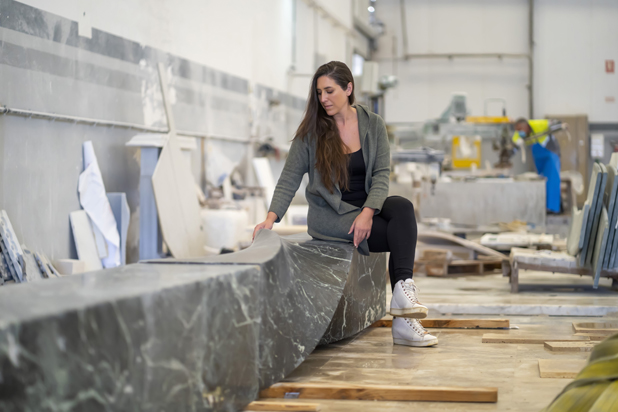The effervescence of Spanish design in recent decades would not be understood without the contribution of a growing group of creative women, whose work is widely recognized within and beyond our borders.
The celebration of International Women's Day on March 8 was just the excuse to get to know and share the vision and experiences of some of them, names that, in their own right, are already leading roles in the world of design. Andrea Santamarina, Verónica Mar, Silvia Ceñal, Romina Gris and Gemma Bernal give voice to the female talent in the industry.
Achievements and Challenges
Andrea Santamarina begins by stressing "The role of women in the design industry is indispensable,” "Now there is a good breeding ground and, in the coming generations, more and more female designers are becoming known, and they don't need to go hand in hand with a man to start a studio. This is the case of Marta Ayala, Teresa Fernández Pello, Claudia Paredes and Irene Infantes, a few of the names on a list that is growing steadily. I consider it fundamental that women support each other and make the work of all of us visible in order to achieve margins closer to equality."
“We still have a long way to go," reflects Silvia Ceñal. An opinion shared by Romina Gris: "The benchmarks cited in interviews or in schools are usually males. In the end, future female designers, even if they occupy 80% of the classrooms (at least, for example, in interior design) take on secondary roles when it comes to signing projects and being recognized."
Therefore, "the key lies in education, in bringing to light works as important as those of Sonia Delaunay (in her graphic and textile designs) or Ray Eames, for example," says Verónica Mar.
Despite the imbalances, Gemma Bernal does not see significant gender-based difficulties in terms of opportunities. However, in her own case, the passage of time and the continuous contact with young people throughout her 27 years of teaching career, have made her aware of certain limitations "typical of my generation, and always related to the education received."
“Women are increasingly being recognized as designers," says Verónica Mar, and this has opened up an infinite range of opportunities, especially in the foreign market. “99% of my clients are international (in the United Arab Emirates, the U.A.E., the U.S., Germany, China, Japan…) and I am represented by one of the most prestigious galleries in terms of design in New York, Les Ateliers Courbet.”
For Andrea Santamarina, the support of female gallery owners has been "indisputable" in consolidating her career. “The difficulties are many, but it is an absolutely vocational job, a long-distance race in which you have to know how to manage uncertainty and take advantage of crises to emerge stronger."
A Different Vision
"I don't think being a woman has been a handicap, rather an asset to keep in mind. If a company wants to broaden its horizons or have a different point of view, what better than to bet on a woman or a young designer. And if both come together in one person, that’s even better," says Silvia Ceñal.
According to Romina Gris, the value of women designers is "a vision of reality that is at least different and interesting. Her story is different from what we are used to in this patriarchal society."
In general," says Gemma Bernal, "women are more intuitive, adaptable to the situations they face, and able to lead, organize and move well in diversity. In addition, preparation and knowledge are the same today."
"We bring the same value as men," corroborates Andrea Santamarina. “The intention of both is to get a personal look that generates not only individual but also collective value (for those who look at it or make use of it, without the other there is no design possible).”
“I like to think that every designer who enters the industry brings something new to the table," Silvia Ceñal notes. "Women provide another point of view, we bring a new image of design, more organic, a necessary balance towards an equal society," says Veronica Mar.
Benchmark Figures
In their reflection on the role of women in this sector, they all agree on one point: the importance of female benchmarks and the multiplying effect given by the work of pioneers such as Ray Eames, Eva Zeisel and Lilly Reich.
They paved the way for female talent in the different disciplines related to design, exemplified in Spain by names such as Patricia Urquiola, Nani Marquina, Nina Masó, Mariví Calvo, Inma Bermúdez and Eva Prego. Figures that Andrea Santamarina, Verónica Mar, Silvia Ceñal, Romina Gris and Gemma Bernal cite, among others, as a source of inspiration.






























